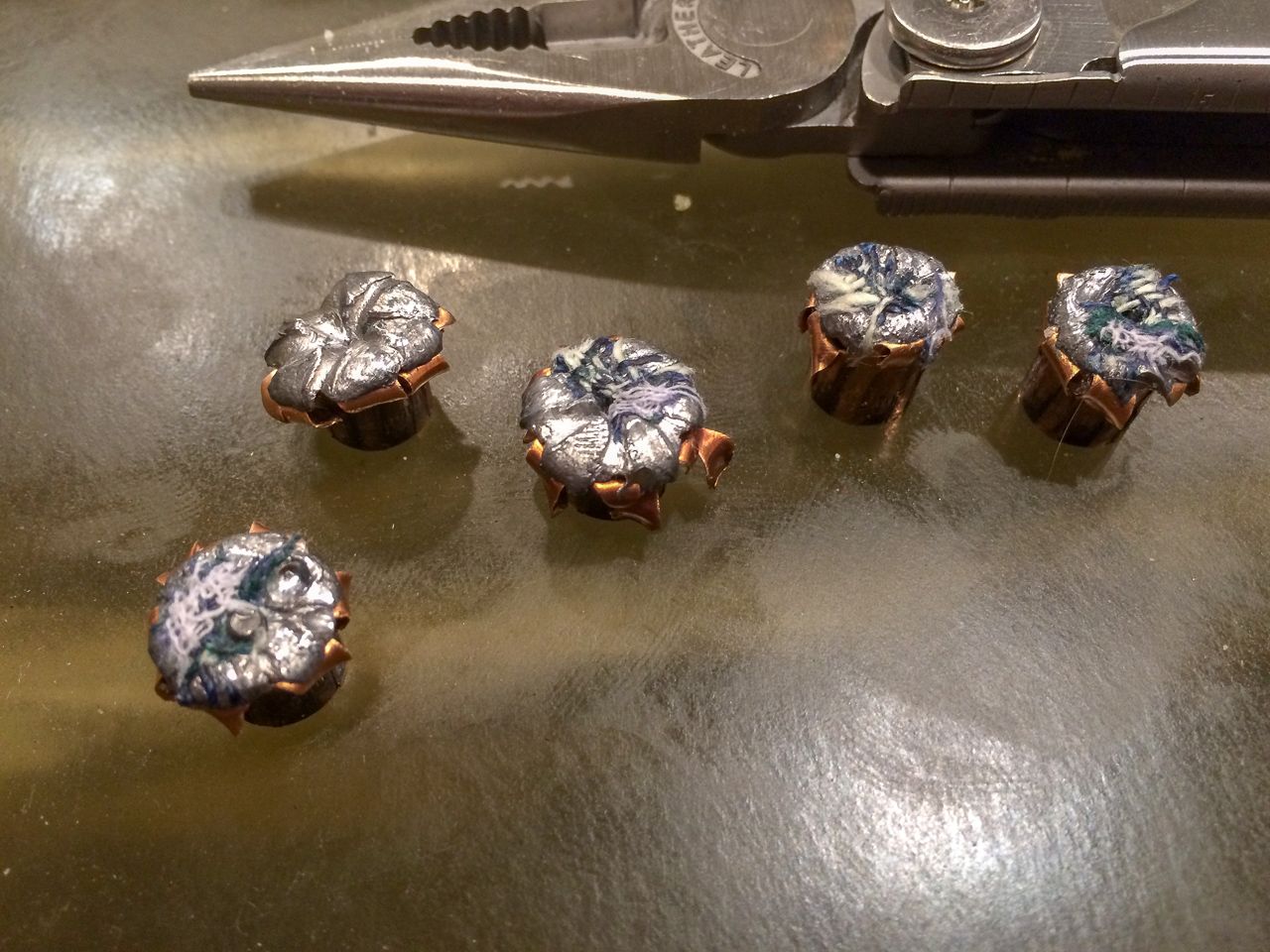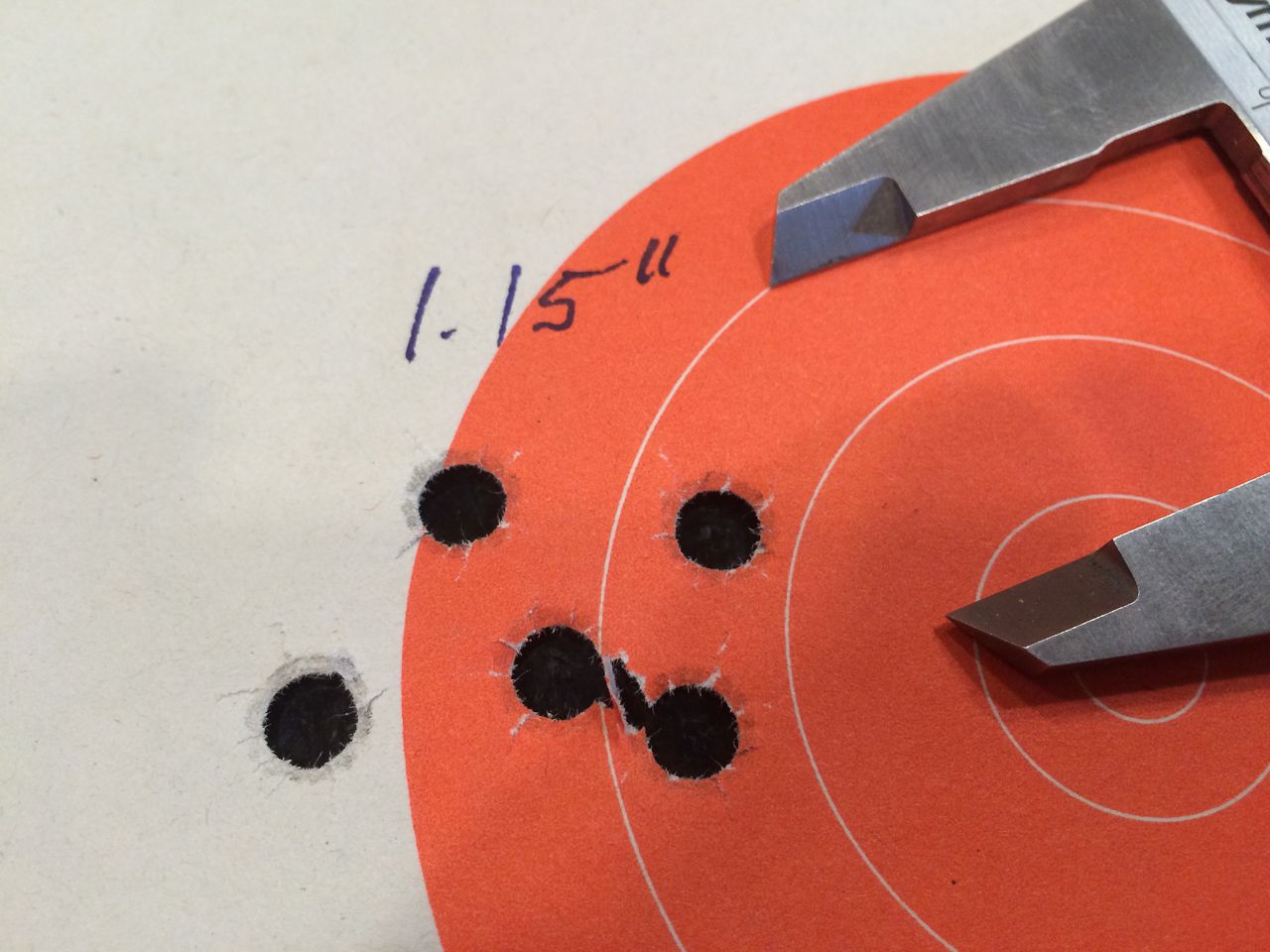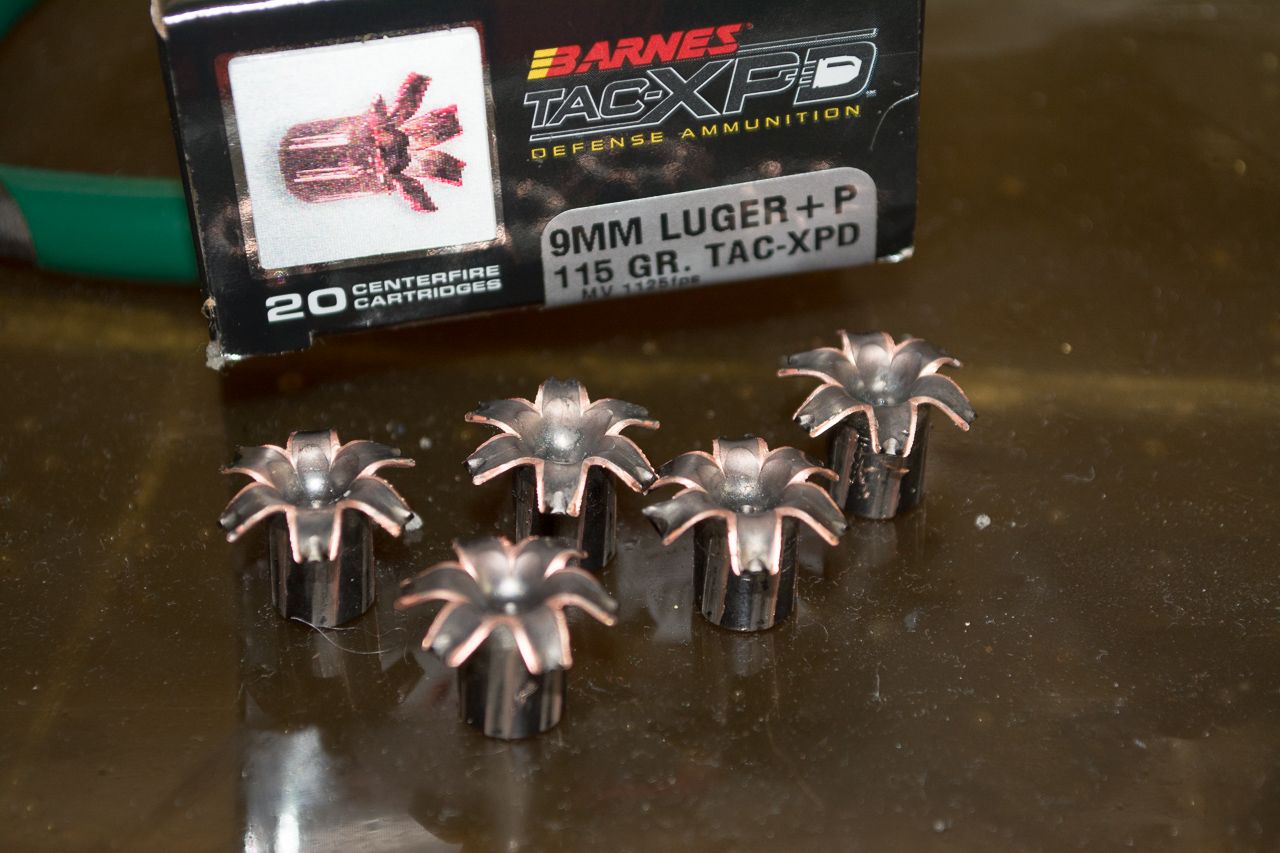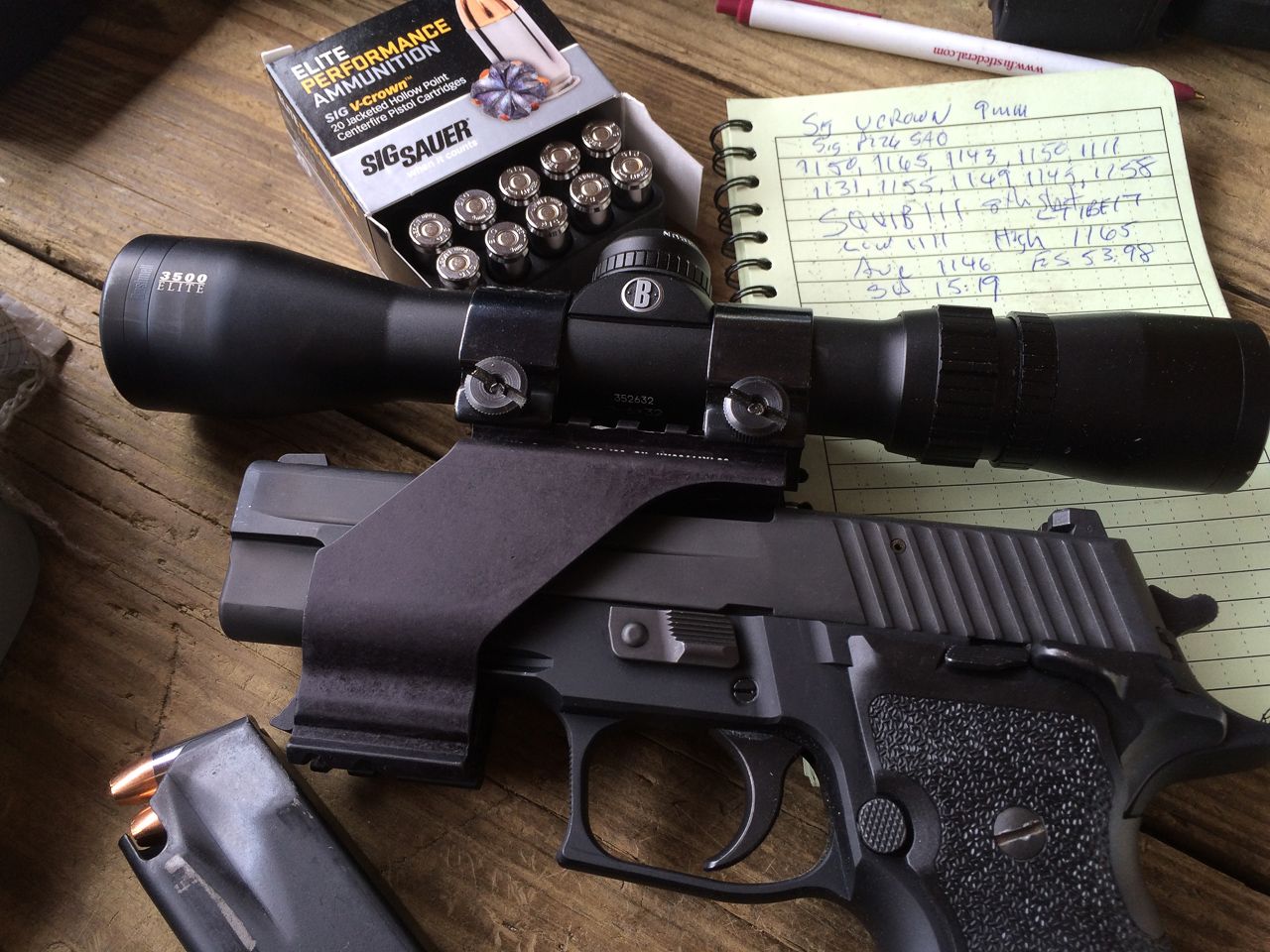When choosing self-defense ammo, you can’t make blanket judgments like “Bad Dood Blaster Xtryllium” is the best!” Whether a particular round is effective or not depends on all sorts of factors.
You have to consider the gun from which it’s fired – primarily its barrel length. Barrel length determines velocity and velocity impacts penetration and expansion in a big way. You have to consider the caliber because Bad Dood Blaster Xtryllium might be great in 9mm but stink in .380 ACP. You have to consider the bullet weight because that’s an essential factor that influences the delicate balance of penetration versus expansion. In other words, Brand X’s 147-grain load fired from a 4-inch barrel Power Pistol Company semi-automatic might work just fine, but when fired from an ACME Pocket Master with a 3-inch barrel, it might fail to expand as designed.
Testing…
If you want to know if a particular ammo choice is right for you, then you need to test a specific brand , a specific bullet weight, and you need to do that from your gun. Using gelatin blocks is the industry standard, but if you don’t want to invest time, energy, and money in all that laboratory work, you can do the budget method. Just collect a large pile of old newspaper, immerse it in water for a day or so, and use that as a budget gel block. While the FBI ballisticians won’t accept those results, it will give you an idea of how your ammo performs. Be sure to place some fabric layers in front of your soggy pile of fake news.
With all of the previous disclaimers said, there are a few loads in the 9mm category that have stood out and demonstrated excellent performance through a variety of pistol types in our gelatin testing over the years. I should note that all expansion and penetration numbers shown below were all taken in a “heavy fabric” test where the bullet had to penetrate four layers of light, medium, insulation, and denim before impacting the gel blocks. Any bullet will expand in bare gelatin, but many fail when encountering tougher clothing barriers first. All that clothing tends to clog up hollow points and make picture-perfect expansion more elusive.
Sig Sauer V-Crown 124-grain
The ammo team at Sig Sauer has been hell-bent on dominating the FBI ammunition performance standards for years now. Starting with the battery of standardized ammo tests like clothing, wood, glass, and even steel penetration, they’ve tweaked not only the V-Crown bullet designs but also the powder types and loads for each caliber and bullet weight variant.

In the 9mm category, I’ve tested all three V-Crown loads extensively, and while the 115-grain and 147-grain 9mm choices perform just fine, the 124-grain tends to stand out. As an example of performance, consider these results when fired from a Sig Sauer P226 SAO pistol at ClearBallistic gelatin blocks draped with the four-layer heavy fabric.
Penetration of five different shots ranged from 14.75 to 16.5 inches – virtually perfect. Expansion after passing through the fabric layers was also picture perfect, with ending bullet diameters ranging from .505 to .645 inches. Even though the V-Crown is a jacketed bullet design, all jackets and lead cores stayed together. I weighed the recovered bullets, and the lightest of the bunch tipped the scale at 123.9 grains.

Federal HST 124-grain

Like the Sig Sauer V-Crown ammo, the Federal HST 9mm 124-grain load has demonstrated near-perfect performance in terms of expansion and penetration. Penetration and expansion performance almost exactly matches that of the Sig Sauer V-Crown 124-grain loads.
I’ve also tested this one for accuracy, and that’s where the consistency of this ammo shines. I did 25-yard, five-shot group testing with four different handguns and measured the following.
Smith & Wesson M&P 9 M 2.0 4.25″ Barrel: 2.14”
Smith & Wesson M&P 9 M 2.0 5-inch Barrel w/ Safety: 2.30”
Beretta APX Compact 3.7” Barrel: 1.57”
Beretta APX RDO 4.25” Barrel: 2.32”
The results were impressive. What was even more impressive was the consistency of accuracy using a variety of service-type polymer pistols.
Barnes TAC-XPD +P 115-grain
The Barnes TAC-XPD +P 115-grain load is lighter than the other two for a specific reason. The bullet is an all-copper model with a hollow-point cavity the size of James Cameron’s ego. Since copper is less dense than lead, a bullet of approximately the same size will weigh less than its lead counterpart.
For years, Barnes TAC-XPD bullets have been famous for their expansion, penetration, and weight retention that stems from the solid-copper construction. They’ve been available to hand loaders and other manufacturers as components. More recently, the company has been loading distinctive cartridges, easily spotted by their shiny gray appearance for case and projectile. They’re not just lookers; they also perform.

When fired from a Beretta 92 FS pistol, penetration through heavy fabric and into gelatin blocks measured between 13 and 14.5 inches. Bullet expansion was even more impressive with five bullets measuring .698, .701, .703, .708, and .731 inches. Considering that each of those projectiles began its flight with a diameter of .355 inches, those final measurements represent expansion to roughly double the original size.

Accuracy is nothing to sneeze at either. When fired from a Sig Sauer P226 Legion, 25-yard, five-shot groups routinely measured less than two inches with the smallest being 1.38 inches. A Sig Sauer P226 SAO delivered a 1.39-inch group while a Beretta APX RDO printed another at just 1.75 inches.

Closing Arguments
You may have noticed that the two “more traditional” jacketed 9mm loads were both in the 124-grain weight range. Based on lots of testing with lighter and heavier bullets, that seems to be the perfect sweet spot for most 9mm pistols. There’s nothing wrong with going heavier or lighter, just be aware that performance will vary depending on the gun you use. If you choose a subcompact with a shorter barrel, then a 115-grain load may serve you better as you’ll have more velocity with which to aid proper expansion and penetration.

I picked out three loads that have risen to the top, but that’s not to say that they’re the only good ones on the market. Others like the venerable Speer Gold Dot perform perfectly well too – I just had to draw the line somewhere. The important takeaway is to be aware that generalizations based on brand don’t necessarily apply. It’s important to consider, and ideally test, the exact combination of brand, caliber, bullet weight, and gun. Only then will you know exactly how your ammo will perform.



Pingback: Putting Three Great 9mm Self-Defense Rounds to the Test | My Gun Culture()